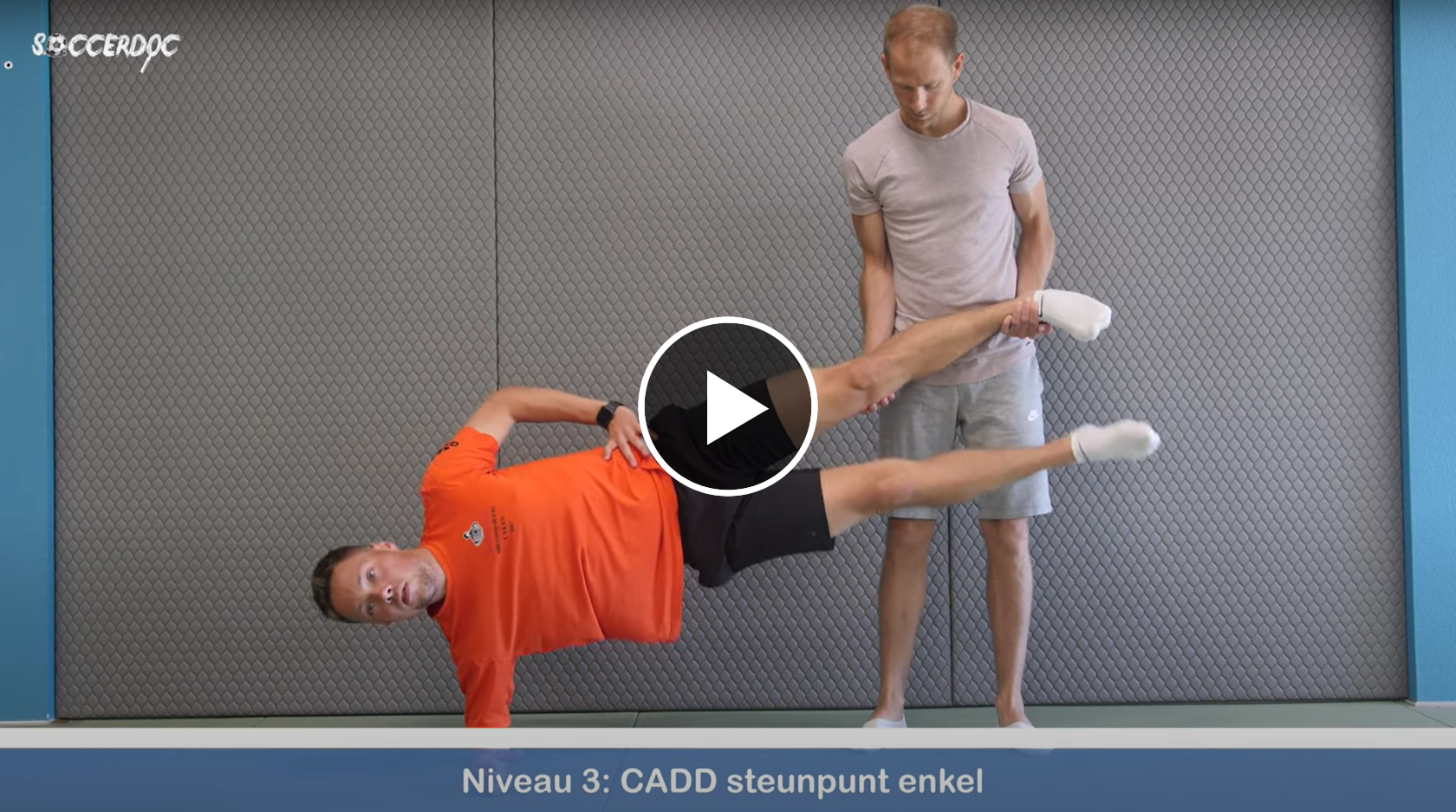The fact that groin injuries are a commonplace in football is nothing new. The incidence in men’s football is estimated to be 4-19% and in women 2-14%. In professional football, one in five players develop groin problems during a season, meaning the player cannot play for a while. According to the ‘Doha agreement’ groin problems are classified as: adductor-related, inguinal-related, iliopsoas-related and pubic-related. Groin problems can also be hip-related or there may be other causes. Two out of three cases of groin injuries are related to the hip adductors. However, the risk of developing groin problems when preparing for a season seems to be two times more likely than during the actual season. We also know that groin injuries do not recover through rest. Many players who start the summer break with groin injuries will still be suffering from these injuries during preparations for the next season. This emphasises the importance of good preventive training programmes and the need to progressively build up the physical load during the preparatory phase.
What can you do about it?
Low adduction strength has been identified as an important risk factor for adductor-related groin pain. This resulted in the development of the ‘Adductor Strengthening Programme’. This programme is based on the effective ‘Copenhagen Adductor’ exercise, an exercise that was, however, found to be too difficult for many players in practice, particularly when pain is present. The ‘Adductor Strengthening Programme’ therefore consists of different levels (see here). Level 1 is the side-lying hip adduction, level 2 is the Copenhagen Adductor exercise, but with a shorter lever arm (holding the knee) and level 3 is the original Copenhagen Adductor exercise.

Players must train at the highest achievable level. A maximum allowable pain score of NPRS 3 at a scale of 0 to 10 applies. If the pain score is higher, the level of training should be lowered. The advice is to then build up the load based on the schedule below. The best time to perform these exercises is during the warm-up.
Tabel 1 Protocol Adductor Strengthening Programme
Week Sessies per week Sets per kant Herhalingen per kant
Voorbereiding seizoen

The training programme has proven to be very effective for male professional footballers. It is estimated that following this programme reduces the risk of groin problems by 41%. It should be added that consistent implementation of the programme is crucial. It is also recommended that the programme is integrated into the FIFA 11+ programme.
Get started!
Although the study was carried out amongst male professional football players, it is likely that the ‘Adductor Strengthening Programme’ would also be effective in male and female football players who play at other levels. Now that the preparations for the new football season are underway, it’s time to get started! With each session lasting less than 5 minutes, this can make a significant difference to the number of groin injuries suffered during a season. These exercises should therefore be included as standard in the training sessions in line with the aforementioned schedule. Consistency and correct execution of the exercises are crucial. One exercise programme can already make a significant difference!
1 Waldén, M., Hägglund, M., & Ekstrand, J. (2015). The epidemiology of groin injury in senior football: a systematic review of prospective studies. British journal of sports medicine, 49(12), 792–797. https://doi.org/10.1136/bjsports-2015-094705
2 Weir A, Brukner P, Delahunt E, et al Doha agreement meeting on terminology and definitions in groin pain in athletes British Journal of Sports Medicine 2015;49:768-774
3 Mosler, A. B., Weir, A., Eirale, C., Farooq, A., Thorborg, K., Whiteley, R. J., Hӧlmich, P., & Crossley, K. M. (2018). Epidemiology of time loss groin injuries in a men's professional football league: a 2-year prospective study of 17 clubs and 606 players. British journal of sports medicine, 52(5), 292–297. https://doi.org/10.1136/bjsports-2016-097277
3 Esteve, E., Rathleff, M. S., Hölmich, P., Casals, M., Clausen, M. B., Vicens-Bordas, J., Pizzari, T., & Thorborg, K. (2020). Groin problems from pre- to in-season: a prospective study on 386 male Spanish footballers. Research in sports medicine (Print), 1–7. Advance online publication. https://doi.org/10.1080/15438627.2020.1860044
4 Esteve, E., Rathleff, M. S., Hölmich, P., Casals, M., Clausen, M. B., Vicens-Bordas, J., Pizzari, T., & Thorborg, K. (2020). Groin problems from pre- to in-season: a prospective study on 386 male Spanish footballers. Research in sports medicine (Print), 1–7. Advance online publication. https://doi.org/10.1080/15438627.2020.1860044
5 Harøy, J., Clarsen, B., Wiger, E. G., Øyen, M. G., Serner, A., Thorborg, K., Hölmich, P., Andersen, T. E., & Bahr, R. (2019). The Adductor Strengthening Programme prevents groin problems among male football players: a cluster-randomised controlled trial. British journal of sports medicine, 53(3), 150–157. https://doi.org/10.1136/bjsports-2017-098937